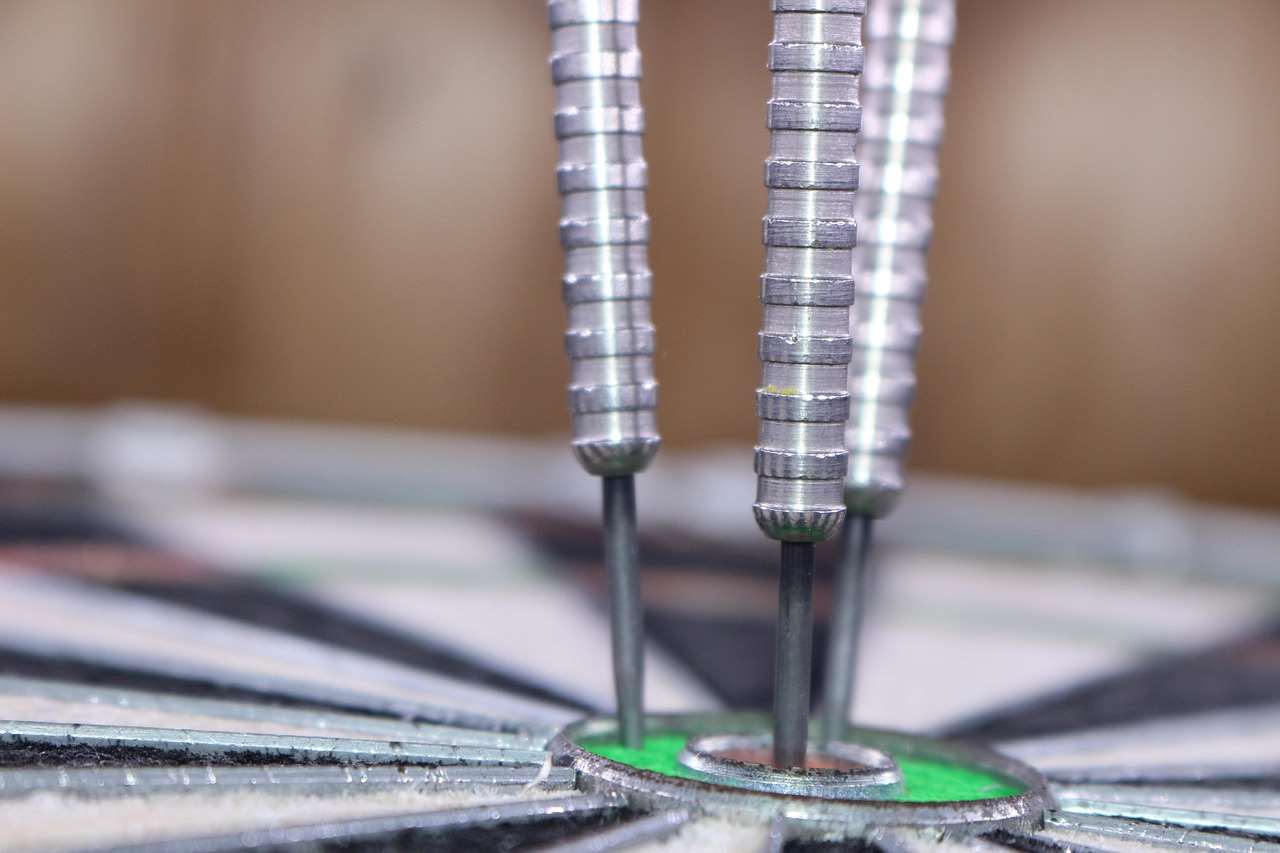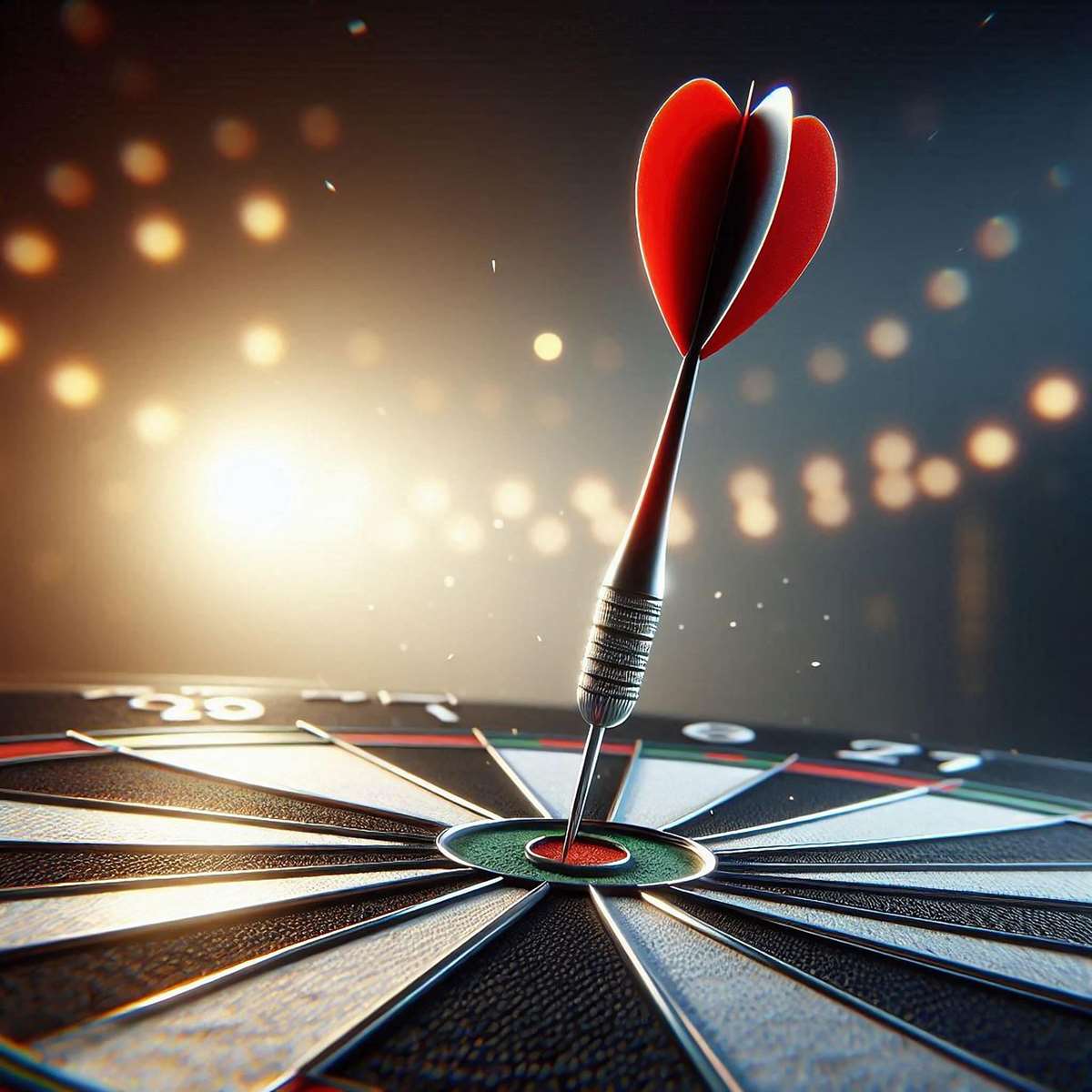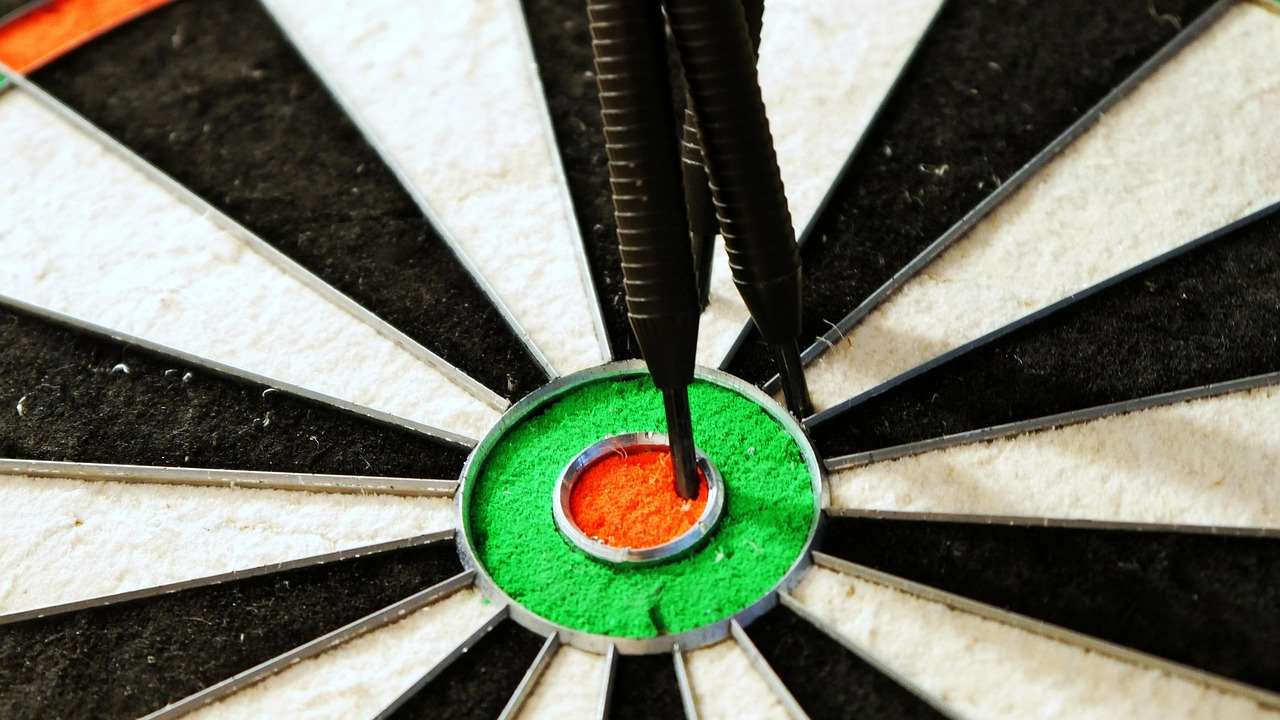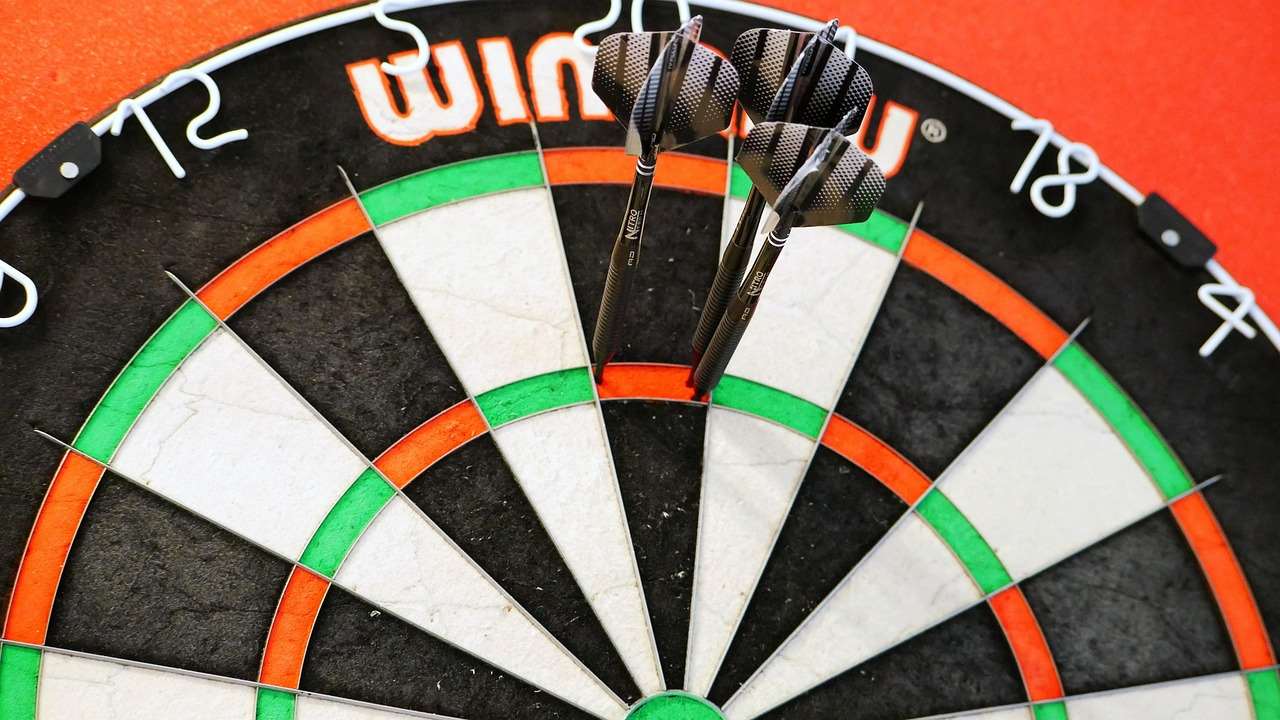The secret to **how to build a darts club** that thrives lies in creating a welcoming atmosphere, finding a suitable venue, and promoting it effectively. This article will guide you through every step, from initial planning and securing funding to recruiting members and organizing successful events, ensuring your darts club becomes a popular community hub.
⚠️ Still Using Pen & Paper (or a Chalkboard)?! ⚠️
Step into the future! The Dart Counter App handles all the scoring, suggests checkouts, and tracks your stats automatically. It's easier than you think!
Try the Smart Dart Counter App FREE!Ready for an upgrade? Click above!
Laying the Foundation: Planning Your Darts Club
Before you start throwing darts, you need a solid plan. This initial planning phase is crucial for success. Consider these key aspects:
- Defining Your Club’s Vision: What kind of club do you want to create? Will it be purely social, competitive, or a mix of both? Defining your vision will guide all your subsequent decisions.
- Identifying Your Target Audience: Are you aiming for experienced players, beginners, or a broad range of skill levels? Understanding your audience will help you tailor your offerings and marketing efforts.
- Assessing Local Demand: Is there already a strong darts scene in your area? If so, what can you offer that’s different or better? If not, how can you generate interest?
Consider conducting a local survey or informal poll to gauge interest. This will give you valuable insights into the potential membership base and help you refine your club’s concept.

Securing a Venue: The Heart of Your Darts Club
Finding the right venue is paramount. It needs to be accessible, affordable, and conducive to playing darts. Here’s what to look for:
- Location and Accessibility: Choose a location that’s easy for members to reach, with good public transport links and ample parking.
- Space Requirements: You’ll need enough space for dartboards, playing areas, seating, and potentially a bar or refreshment area. Aim for at least 10 feet of unobstructed space in front of each dartboard. You can learn more from our Finding A Venue For Darts League guide.
- Lighting: Good lighting is essential for accurate dart throwing. Ensure the dartboards are well-lit, with minimal glare.
- Budget: Negotiate a lease or rental agreement that fits your club’s budget. Consider the cost of utilities, insurance, and any necessary renovations.
Many pubs and community centers are open to hosting darts clubs, either on a regular basis or for special events. Explore all your options and negotiate the best possible terms. Remember to consider the long-term implications of your chosen venue; a reliable and welcoming space is key to sustained growth.
Funding Your Darts Club: Making the Numbers Work
Starting a darts club requires financial investment. Here’s how to secure the necessary funding:
- Membership Fees: Set a reasonable membership fee that covers your basic operating costs. Offer different membership tiers (e.g., social, competitive) with varying benefits.
- Sponsorship: Approach local businesses for sponsorship opportunities. Offer them advertising space in your club or on your website in exchange for financial support.
- Fundraising Events: Organize fundraising events, such as tournaments, raffles, or quiz nights, to generate additional revenue.
- Grants and Loans: Explore potential grants and loans from local councils, sports organizations, or community funding bodies.
Create a detailed budget that outlines your projected income and expenses. This will help you track your finances and make informed decisions about spending.

Recruiting Members: Building Your Darts Community
**Recruiting members** is vital for the success of your club. Here’s how to attract a diverse and engaged membership base:
- Online Presence: Create a website or social media page for your club. Share information about your events, activities, and membership benefits. You can check out our Recruiting Members Darts League Club guide for more details.
- Local Advertising: Place advertisements in local newspapers, community newsletters, and online forums.
- Open Days and Taster Sessions: Host open days and taster sessions to give potential members a chance to try darts and learn more about your club.
- Partnerships: Partner with local pubs, community centers, and sports organizations to promote your club to their members.
- Word-of-Mouth: Encourage existing members to spread the word about your club to their friends, family, and colleagues.
Make your club welcoming and inclusive to all skill levels. Offer coaching and mentoring programs for beginners to help them improve their game. Remember, a friendly and supportive atmosphere is key to retaining members and fostering a strong sense of community. Consider running beginner-friendly events and workshops to make darts accessible to everyone. Also, think about offering discounted membership rates for students, seniors, or families to encourage wider participation.
Organizing Events: Keeping Members Engaged
Regular events are essential for keeping members engaged and attracting new players. Here are some event ideas:
- Weekly Club Nights: Host weekly club nights with friendly competitions, social games, and practice sessions.
- Tournaments: Organize regular tournaments with varying skill levels and prize money.
- Leagues: Participate in or create your own darts league, providing competitive opportunities for your members. Our guide on How To Start A Darts League will give you more insight.
- Social Events: Organize social events, such as pub quizzes, karaoke nights, or themed parties, to foster a sense of community.
- Exhibitions and Demonstrations: Invite professional darts players to give exhibitions and demonstrations at your club.
Promote your events widely through your website, social media channels, and local advertising. Ensure your events are well-organized and cater to the diverse interests and skill levels of your members. Consider creating a calendar of events and publishing it well in advance to allow members to plan their participation.

Darts Club Equipment: Essential Gear for Success
Having the right equipment is crucial for a positive darts experience. Here’s a list of essential gear:
- Dartboards: Invest in high-quality bristle dartboards that are durable and provide good scoring accuracy.
- Darts: Provide a selection of darts in different weights and styles for members to try.
- Lighting: Ensure adequate lighting around the dartboards to improve visibility and accuracy.
- Oche: Mark a clear and consistent oche (throwing line) at the regulation distance from the dartboard.
- Scoreboards: Provide scoreboards or electronic scoring systems for tracking scores during games.
- Dartboard Surrounds: Install dartboard surrounds to protect the surrounding walls from stray darts.
Consider purchasing equipment in bulk to save money. You can also partner with local darts suppliers to get discounted rates. Ensure that all equipment is properly maintained and replaced as needed.
Creating a Welcoming Atmosphere: Fostering a Positive Darts Environment
A welcoming atmosphere is essential for attracting and retaining members. Here’s how to create a positive darts environment:
- Be Inclusive: Welcome players of all skill levels and backgrounds.
- Encourage Sportsmanship: Promote fair play and respectful behavior. A helpful resource is Darts Culture And Community Guide.
- Offer Coaching and Support: Provide coaching and mentoring programs to help beginners improve their game.
- Celebrate Successes: Recognize and celebrate the achievements of your members.
- Solicit Feedback: Regularly solicit feedback from members to identify areas for improvement.
Encourage social interaction among members. Organize social events, such as pub quizzes or karaoke nights, to foster a sense of community. Remember, a friendly and supportive environment is key to creating a thriving darts club.

Legal and Administrative Considerations: Keeping Your Club Compliant
Running a darts club involves certain legal and administrative responsibilities. Here’s what you need to consider:
- Insurance: Obtain public liability insurance to protect your club from potential claims.
- Licensing: Check if you need any licenses to operate your club, such as a liquor license or a music license.
- Data Protection: Comply with data protection regulations when collecting and storing members’ personal information.
- Constitution: Create a constitution that outlines the rules and regulations of your club.
- Committee: Elect a committee to manage the day-to-day affairs of the club. You can learn more from our Darts Club Administration Guide.
Seek professional advice from a solicitor or accountant to ensure that your club is compliant with all applicable laws and regulations.
Marketing and Promotion: Spreading the Word About Your Darts Club
Effective marketing and promotion are essential for attracting new members and raising the profile of your club. Here are some marketing strategies to consider:
- Website and Social Media: Create a website and social media presence to share information about your club, events, and membership benefits. You can read more about Promoting Local Darts in our guide.
- Local Advertising: Place advertisements in local newspapers, community newsletters, and online forums.
- Public Relations: Issue press releases to local media outlets to announce new events or achievements.
- Partnerships: Partner with local businesses, community centers, and sports organizations to promote your club to their members.
- Word-of-Mouth: Encourage existing members to spread the word about your club to their friends, family, and colleagues.

How To Build A Darts Club: Continuous Improvement
Building a successful darts club is an ongoing process. Continuously strive to improve your club by:
- Seeking Feedback: Regularly solicit feedback from members to identify areas for improvement.
- Analyzing Data: Track key metrics, such as membership numbers, event attendance, and financial performance, to identify trends and opportunities.
- Staying Up-to-Date: Keep abreast of the latest developments in the world of darts, such as new equipment, rules, and training techniques.
- Networking: Network with other darts clubs and organizations to share ideas and best practices.
- Adapting to Change: Be prepared to adapt your club’s offerings and activities to meet the changing needs and preferences of your members.
Remember, building a thriving darts club takes time, effort, and dedication. By following these steps and continuously striving to improve, you can create a welcoming and successful community hub for darts enthusiasts in your area. Furthermore, think about running surveys to get feedback on what darts players are looking for. For example, more competitive opportunities (perhaps you could check out Building Local Darts League Club Guide) or more social events.
Conclusion
Successfully **how to build a darts club** involves careful planning, securing a suitable venue, attracting members, and organizing engaging events. By focusing on creating a welcoming atmosphere, fostering a strong sense of community, and continuously improving your offerings, you can build a thriving darts club that benefits both its members and the local community. Take the first step today – gather your initial supporters, scout potential locations, and start planning your grand opening! Good luck in building your darts club!
Hi, I’m Dieter, and I created Dartcounter (Dartcounterapp.com). My motivation wasn’t being a darts expert – quite the opposite! When I first started playing, I loved the game but found keeping accurate scores and tracking stats difficult and distracting.
I figured I couldn’t be the only one struggling with this. So, I decided to build a solution: an easy-to-use application that everyone, no matter their experience level, could use to manage scoring effortlessly.
My goal for Dartcounter was simple: let the app handle the numbers – the scoring, the averages, the stats, even checkout suggestions – so players could focus purely on their throw and enjoying the game. It began as a way to solve my own beginner’s problem, and I’m thrilled it has grown into a helpful tool for the wider darts community.